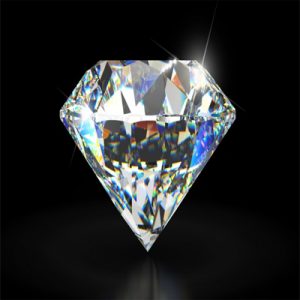Diamond
Diamond is one of the top four in popularity of gems; Diamond, Sapphire, Ruby and Emerald. Its additionally the hardest substance that is natural. It is formed deep in the Earths mantle, and is brought to the outer lining via kimberlite pipes, eclogites and other rocks that originate deep within the mantle. It really is additionally found in alluvial deposits, along with Quartz, Corundum, Zircon and other minerals produced by such rocks. Diamond is also found in certain meteorites such as carbonaceous iron and achondrite meteorites. The variety Carbonado forms in stellar supernovae explosions (Garai et al., 2006). Diamond is polymorphous with Chaoite, Graphite and Lonsdaleite.
Diamonds are found in numerous locations worldwide.
| Crystallography: | Isometric – Hexoctahedral |
| Crystal Habit: | Most commonly octahedral, crystals to 10 cm or more, also dodecahedral, tetrahedral, and cubic. Curved and striated faces common; spherical, with internal radial structure. |
| Twinning: | Contact twins with {111} as twin plane; typically flattened on {111}; as penetration twins, may be repeated. |
| Cleavage: | [111] Perfect, [111] Perfect, [111] Perfect |
| Fracture: | Conchoidal |
| Tenacity: | Brittle |
| Hardness (Mohs): | 10.0 (Mohs hardness reference species) |
| Density: | 3.511 – 3.530 (g/cm3) |
| Luminescence: | Occassionally Fluorescent (Blue) and Phosphorescent; Triboelectric |
| Radioactivity: | Not Radioactive |
| Other: | The highest thermal conductivity of any known substance. |
| Color: | Colorless, pale Yellow to deep Yellow, Brown, White, Blue-White; less commonly in Oranges, Pinks, Greens, Blues, Reds, Gray to Black |
| Transparency: | Transparent to Translucent |
| Luster: | Adamantine to Greasy |
| Refractive Index: | 2.4175 – 2.4178 Isotropic |
| Birefringence: | 0.000 Isotropic |
| Dispersion: | Strong |
| Pleochroism: | None |
| Anisotrophism: | Birefringent where strained |


